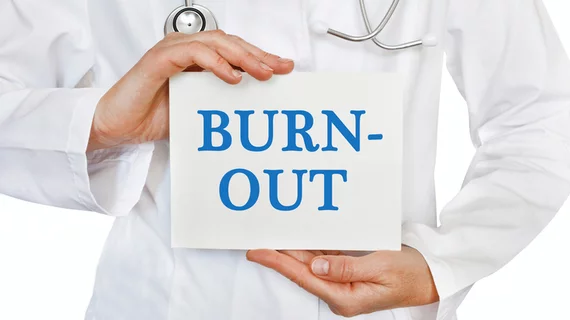Radiologist highlights a potential hidden cause of physician burnout
A prominent radiologist is warning healthcare leaders about one potential hidden cause of burnout among the specialty.
Dieter R. Enzmann, MD, detailed his thoughts in a perspective piece published Tuesday in Academic Radiology [1]. In particular, he highlighted physicians’ “pivotal need” for affirmation of their professionalism, “expressed as autonomy and respect.”
“These two key features are derived from the concept of cultural authority, the loss of which is a hidden cause of burnout,” Enzmann, radiology chair and a professor of medicine at UCLA’s David Geffen School of Medicine, wrote Dec. 5. “Erosion of the foundations of [cultural authority] are deep causes of burnout because they become manifest at the personal level as challenges to professionalism and its associated powers, specifically autonomy, respect and personal agency,” he added.
Enzmann gave the example of health insurers implementing extensive prior authorization processes for radiology services. Such requirements not only challenge physicians’ cultural authority, but their onerousness also shows “active disrespect.”
“Radiologists’ relatively weaker [cultural authority] made them an early and easy target under the banner of cost control,” the author noted. “[Cultural authority] dilution, causing both less autonomy and lowered respect, forms an unfortunate, somewhat hidden driver of personal physician burnout with radiologists being particularly susceptible.”
Before hospitals or practices implement new procedures, policies, rules, incentives, performance measures or AI investments, Enzmann urged leaders to assess their impact on cultural authority. He presented three questions to aid in this discussion:
- Does the initiative increase radiologist knowledge or challenge it?
- Does the initiative improve radiologist competence or question it?
- Does the initiative create difficult trade-offs for radiologists between patient and organizational benefit that could compromise their legitimacy?
In this process, radiology leaders must pinpoint any affronts to the pillars of cultural authority and address them.
“While physicians must handle burnout individually, management bears significant responsibility in supporting [cultural authority] because it strengthens their physician workforce, which improves patient care and also promotes equity, diversity and inclusion, especially for new, underrepresented minority physicians,” Enzmann closed. “They benefit greatly from the autonomy and respect afforded by [cultural authority].”
Read much more in the Association of University Radiologists’ official journal at the link below.

